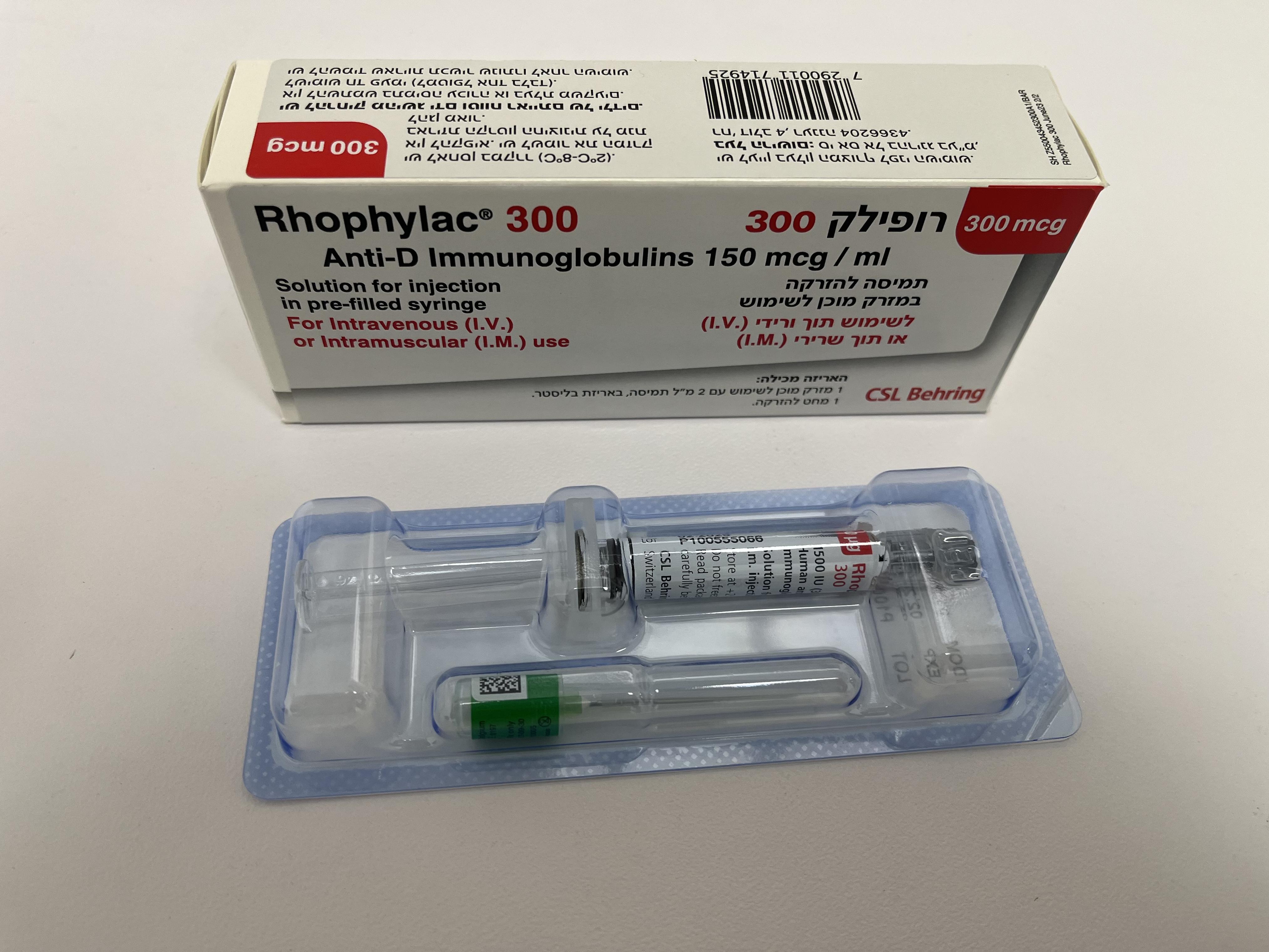Quest for the right Drug

רופילק 300 RHOPHYLAC 300 (ANTI-D IMMUNOGLOBULINS)
תרופה במרשם
תרופה בסל
נרקוטיקה
ציטוטוקסיקה
צורת מתן:
תוך-שרירי, תוך-ורידי : I.M, I.V
צורת מינון:
תמיסה להזרקה : SOLUTION FOR INJECTION
עלון לרופא
מינוניםPosology התוויות
Indications תופעות לוואי
Adverse reactions התוויות נגד
Contraindications אינטראקציות
Interactions מינון יתר
Overdose הריון/הנקה
Pregnancy & Lactation אוכלוסיות מיוחדות
Special populations תכונות פרמקולוגיות
Pharmacological properties מידע רוקחי
Pharmaceutical particulars אזהרת שימוש
Special Warning עלון לרופא
Physicians Leaflet
Posology : מינונים
4.2 Posology and method of administration Posology The following dose schedules are recommended based on the clinical studies performed with Rhophylac, however consideration must be given to professional guidelines for the use of anti-D IgG in the individual country of application. Prevention of Rh(D) immunisation in Rh(D)-negative women: • Antepartum prophylaxis: The recommended dose is a single dose of 300 micrograms (1,500 IU) administered by intravenous or intramuscular injection at 28 to 30 weeks of gestation. • Postpartum prophylaxis: For intravenous administration, 200 micrograms (1,000 IU) is a sufficient dose. If administered intramuscularly, 200 micrograms (1,000 IU) to 300 micrograms (1,500 IU) is recommended. Rhophylac should be administered as soon as possible within 72 hours of delivery. The postpartum dose must be given even when antepartum prophylaxis has been administered. If a large foetomaternal haemorrhage (greater than 4 ml (0.7% to 0.8% of women)) is suspected, e.g., in the event of foetal anaemia or intrauterine foetal death, its extent should be determined by a suitable method, e.g., Kleihauer-Betke test, and additional doses of anti-D should be administered as indicated (20 micrograms/100 IU for each 1 ml of foetal red blood cells). • Prophylaxis following complications of pregnancy: – Interventions and incidents occurring up to 12 weeks gestation: 200 micrograms (1,000 IU) should be administered by intravenous or intramuscular injection as soon as possible and not later than 72 hours after the at-risk event. – Interventions and incidents occurring after 12 weeks of gestation: at least 200 micrograms (1,000 IU) should be administered by intravenous or intramuscular injection as soon as possible and not later than 72 hours after the at-risk event. – Chorionic villus sampling: 200 micrograms (1,000 IU) should be administered by intravenous or intramuscular injection as soon as possible and not later than 72 hours after the at-risk event. Incompatible transfusions The recommended dose is 20 micrograms (100 IU) anti-D immunoglobulin per 2ml of transfused Rh(D)-positive blood or per 1 ml of erythrocyte concentrate. The intravenous route of administration is recommended. If given by intramuscular administration the large doses should be administered over a period of several days. A maximum dose of 3,000 micrograms is sufficient in the case of larger incompatible transfusions independent of whether the transfusion volume is greater than 300 ml of Rh(D)- positive blood. Method of administration Rhophylac can be administered by intravenous or intramuscular injection. In case of haemorrhagic disorders where intramuscular injections are contraindicated, Rhophylac should be administered intravenously. If large doses (> 5 ml) are required and intramuscular injection is chosen, it is advisable to administer them in divided doses at different sites.

שימוש לפי פנקס קופ''ח כללית 1994
Prevention of sensitization of an Rh-negative mother who delivers an Rh-positive child, or after abortion
תאריך הכללה מקורי בסל
01/01/1995
הגבלות
תרופה שאושרה לשימוש כללי בקופ'ח
מידע נוסף
